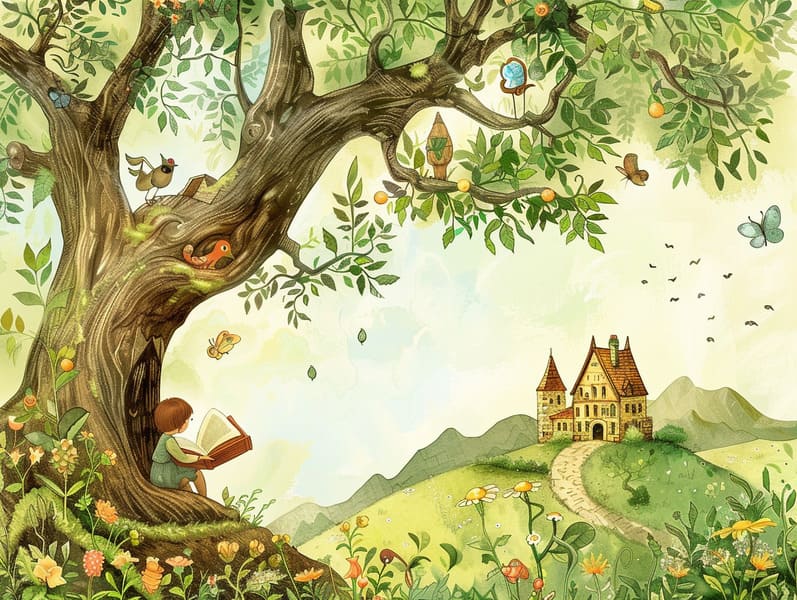The Creation of Historical Fairy Tales and Their Enduring Grace.
The Creation of Historical Fairy Tales and Their Enduring Grace.
Blog Article

Grimm's fairy tales have old origins. These stories have been recounted from one generation to the next long before they were ever published. They originated from a variety of cultures, including Asian traditions. They were initially conveyed among elders, often carrying themes and messages pertaining to the societal norms and beliefs of the time.
The renowned Brothers Grimm, Jacob and Wilhelm Grimm, were among the first to compile and publish many of these beloved fairy tales. Their collection, "Grimm's Folk Tales," included tales like "Cinderella," "Hansel and Gretel," and "Little Snow White," which have since become staples in the world of traditional fairy tales. Similarly, Hans Andersen's fanciful tales, such as "The Sea Maid," and "The Story of the Ugly Duckling," have won hearts worldwide, cementing their place in the pantheon of famous fairy tales.
Despite their historical roots, traditional fairy tales remain as relevant as ever, especially as children's bedtime stories. These fantastical tales are now available in numerous formats, including beautifully illustrated books, magical animations, and web-based fairy tales.
Their lasting presence can be connected to several whimsical characteristics:
Vital Lessons: Ancient fairy tales often provide important moral lessons. Stories like "The Shepherd Boy and the Wolf" teach the benefit of truthfulness, while "The Tortoise and the Hare" exemplify the qualities of tenacity and humility. These tales offer young readers clear distinctions between moral and immoral, developing their moral compass in a tender yet important way.
Empathy and Understanding: Traditional fairy tales frequently portray figures facing struggles and tests, inciting readers to sympathize with their struggles and applaud their triumphs. For instance, "Beauty and the Beast" highlights the necessity of seeing inner beauty to appreciate the inner being of a being, promoting tenderness and knowledge.
Cultural Appreciation: Many timeless fairy tales are steeped in the cultural contexts from which they originated. Exploring these tales can provide intriguing perspectives into different historical contexts, building a sense of world appreciation and perception.
Imagination and Creativity: The fantastical elements in old fairy tales—enchanted objects—inspire children’s dreaming abilities. These narratives take readers to supernatural realms, triggering innovative thinking and a sense of mystery that endures a lifetime.
Ancient fairy tales are not only entrancing but also edifying. They function as entrancing tools in promoting various mind and heart abilities in young readers. When old fairy tales are recited, they advance speech development by showing new words and detailed sentence structures. This practice also cultivates listening abilities and focus, as young ones listen intently, expectant to see what happens next.
Furthermore, examining the themes and characters of classic fairy tales can nurture analytical skills and reasoning skills. Children are led to discover patterns, make predictions, and get cause and effect. These conversations also ease children reveal their thoughts and feelings, advancing their emotional website intelligence.
In today’s information age, the existence of free fairy tales online has made these narratives more acquirable than ever. Digital sites and digital apps give vast collections of Grimm's fairy tales that can be enjoyed or listened through anytime, anywhere. Fairy tales recited are particularly prevalent, supplying an captivating way for young ones to enjoy these entrancing tales. Spoken stories and narrated videos move characters and settings to life, often paired with bewitching soundtracks and music that enhance the narrative journey.
The timeless charm of traditional fairy tales lies in their ability to shift to today's world while maintaining their main lessons. Contemporary versions of these narratives often present more representative figures and modern settings, making them familiar to today’s audience. However, the central morals of boldness, sympathy, and lawfulness remain unchanged, continuing to reach young listeners of all ages.
Classic fairy tales also offer a sense of serenity and comprehensibility. They supply a coherent narrative with a clear beginning, middle, and end, often concluding with the conclusion of conflicts and the triumph of rightness over wrongness. This certainty can be calming for young ones, delivering a sense of unchangeability in an inconstant world.
Ancient fairy tales continue to charm and instruct new generations, maintaining their appeal and importance in modern society. As bedtime stories for kids, they offer a perfect blend of fantasy and learning, developing moral values, empathy, and creativity. The existence of digital fairy tales and the commonness of fairy tales recited promise that these old fairy tales remain attainable to new generations.
By defending and distributing these stories, we continue to exalt the rich tapestry of myths and cultural heritage. Whether you are enjoying a colorful picture book, experiencing a internet library, or listening to an sound book, the magic of old fairy tales is always within reach. These tales teach us of the enduring strength of storytelling and its ability to bring us together across epochs and places.
If you are discovering a gorgeously illustrated book, experiencing a digital library, or listening on an read-aloud story, the wonder of children's fairy tales is always within reach.
These tales teach us of the unwavering effect of tales and its ability to unify us across centuries and lands, casting a charm that charms and informs alike.